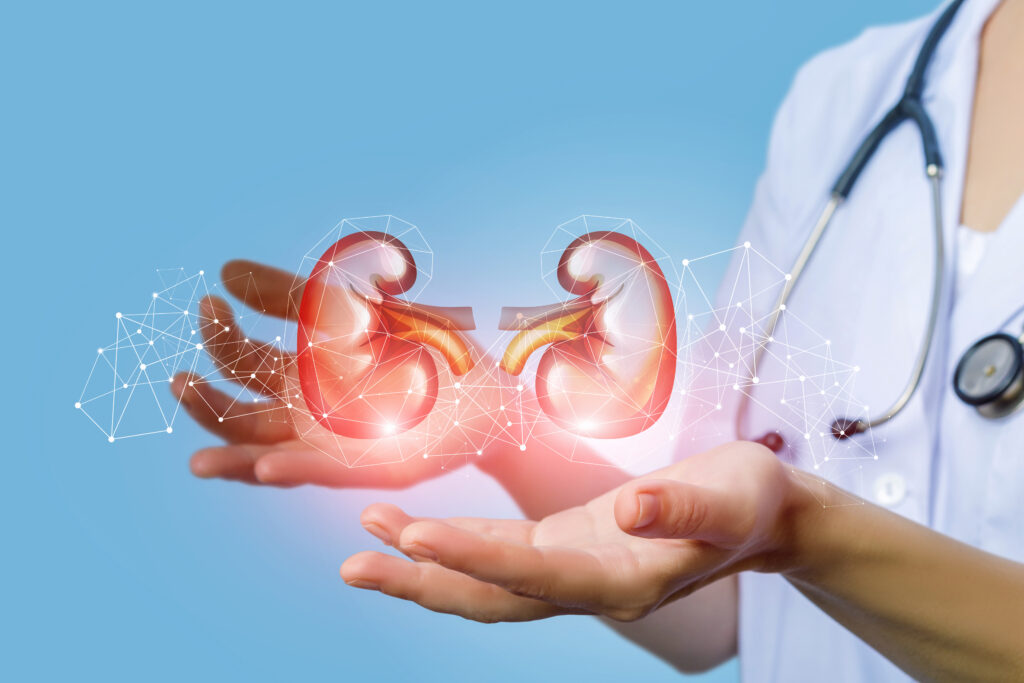
Prize Winners
About the Solution
The RenaVis mixed reality system, in development by CADIS, is an enhanced telehealth and telemonitoring API software that enables mixed reality smart glasses to provide kidney disease management solutions. The RenaVis system would provide secure, interactive, and real-time communication between the wearer of the telehealth smart glasses and the kidney care provider to achieve the following:
- Monitoring, training, and troubleshooting of home dialysis therapy. The RenaVis system could also be utilized to train, educate, and monitor patients undergoing home hemodialysis and peritoneal dialysis. Following initial training of the patient in the dialysis clinic, the patient would then commence dialysis at home more quickly. Using the RenaVis system, the patient could call hands-free to the responsible provider or trainer, who would provide detailed step-by-step guidance to the patient. The provider would supervise the patient in real-time during setup of their dialysis, and with subsequent software development, the provider could appear holographically in the patient’s presence. Closer supervision of patients would reduce therapy complications and improve patient compliance. Home dialysis troubleshooting would also be greatly simplified, as the patient would wear the smart glasses and place a call to the on-call provider, who would then audio-visually troubleshoot the patient’s dialysis system.
- Remote mixed reality interactive telehealth consultations in COVID-19 dialysis clinics. In COVID-19 clinics, frontline dialysis nurses and staff wearing RenaVis glasses could call the provider hands-free using gestures on their cell phone or computer. The provider would connect to see and hear what the frontline nurse in the COVID-19 clinic is seeing and hearing in real time. Consultations would become more interactive yet hands-free. Mixed reality telehealth consultations would reduce the use of personal protective equipment (PPE), thus reducing costs and repetitive COVID-19 exposure of infected patients to providers.
Several additional functionalities, some already available now and others to be developed, would enhance the RenaVis system uniquely and provide novel advantages over traditional telehealth platforms.
-
Holographic annotation: The consulting provider on one end, using a cell phone or tablet, can annotate, drawing an arrow or circling an object on their device screen. At the other end, the wearer of the mixed reality glasses would see the arrow or circle on that specific object, transposed onto their physical visual field. This feature is currently available and would be particularly advantageous for monitoring and troubleshooting with home dialysis patients.
Artificial Intelligence (AI)-driven image interpretation and algorithm-based management: AI would be developed to interpret the visualized images, with algorithms developed to recommend specific interventions to the wearer. For example, a home dialysis patient looking at their hemodialysis or peritoneal dialysis machine through the AI-powered RenaVis smart system could get a message informing them “low blood pressure detected,” or “cloudy peritoneal dialysis effluent visualized,” followed by algorithmically programmed instructions that appear holographically and/or on the patient’s cell phone or tablet. Automatic email alerts could also be set up to the on-call provider/caregiver in these situations.
Holographic immersion: This feature would be ideal for home dialysis training. When both the provider and the patient wear smart glasses and connect to each other, they could both appear in each other’s presence virtually and holographically, creating a more immersive experience.
About the Winner
CADIS is a health technology company with a vision to enhance the delivery of healthcare in the home environment by the development and utilization of cutting-edge technology. Our mission is to provide the best patient experience while receiving appropriate home-delivered medical therapies, to improve health outcomes, and to reduce the cost of healthcare delivery by developing technologies that improve remote monitoring and interactivity.



